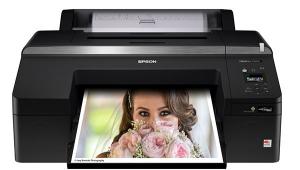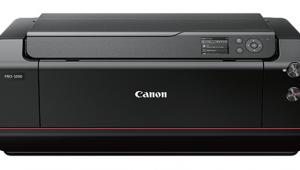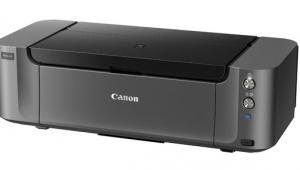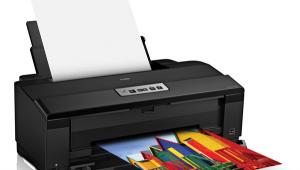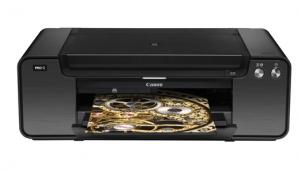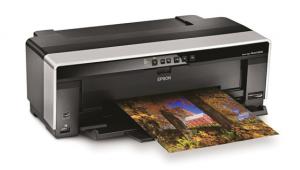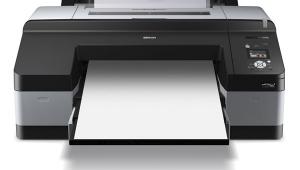indeed an awesome printer..years has passed since it was released but i am still using it as well as office management from http://www.writemyessayfast.org ..bought it because of their recommendations
HiTi’s P510Si Printer; For Event Shooters, And More
While most of us produce an occasional flurry of snapshot-sized or picture-frameable prints, some photographers are in the business of generating dozens, scores, or hundreds of prints at one go. Part of the package—and fun—of event photography (weddings, bar mitzvahs, trade shows, business meetings, school pageants, costume parties, and so on) is passing out or selling just-shot photos to attendees and guests. Other high-volume, quick-production shooting includes passports, photo ID head shots, quick-and-dirty FPO (For Position Only) proofs on important photo shoots, etc. When you need lots of fast, good-looking photo prints, the best kind of printer would be compact, ultra-fast, heavy-duty, easy to operate, and capable of cranking out high-quality 4x6”, 5x7”, or 6x9” photos at a relatively low cost.
 |
|
|
HiTi’s P510Si printer ($1349.95 list price) is ideally suited for the event or volume photographer as it’s capable of delivering fast, consistent, excellent-quality color prints, either in a stand-alone mode or attached to a PC or laptop. Not only is its initial price tag less than the industry leader, the Sony SnapLab series, its cost per print is also slightly to significantly cheaper. Better yet, the P510Si comes equipped (included in price) with a wireless transmitter, which normally adds over $1000 to the cost of a similarly configured SnapLab.
 |
|
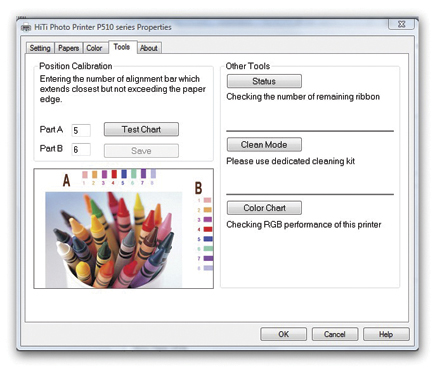 |
|
|
Dye Sub Prints
Like the SnapLab, the P510Si uses dye sublimation rather than inkjet printer technology. Dye sub has several important advantages over inkjet. For one thing, dye sub produces true continuous tone prints by actually combining colors rather than pattering millions of tiny single-colored dots that “trick” the eye into seeing blended colors. That’s why, all other things being equal, dye sub prints generally look brighter and richer, with better and more accurate colors, than comparable inkjet prints.
 |
|
 |
|
 |
|
|
Dye sub’s mess-free plastic ribbons are faster and easier to replace than ink cartridges, and because they exactly match the number of prints to be made, you always know precisely how much you’re paying for each photo. (On the downside, however, you can’t change print sizes on the fly, since the paper and ribbon are matched and both must be swapped out at the same time if another sized print is wanted.) Also, dye sub ribbons emboss a clear plastic ultraviolet overlay on every print, protecting them against fingerprints and spills, as well as keeping them from fading for approximately 50 years. Lastly, dye sub printers generally crank out photos 2-5 times faster than comparable inkjet pro photo printers.
The P510Si is an unremarkable-looking cream and gray-colored, rounded rectangular box about the size of a toaster oven. Although compact in size, it tips the scale at over 30 lbs, making it more transportable than portable. Regrettably, HiTi does not sell a carrying case for the printer, although you can easily buy, and customize, a rolling bag or suitcase for that purpose. The front cover pulls open to allow easy access to the ribbon slot and paper cartridge box. Above it are two memory card slots and a USB interface, for SD/SDHC and CF cards (other memory cards require third-party adapters), and for a key drive or PictBridge-enabled digital camera. On top is the small cluster of controls, behind which is a 3.6” color LCD control panel/display.
For better viewing, the control panel swivels vertically about 170?. The unit’s detachable power cord and USB port are in the rear. Prints eject through a slot on the left side onto a fold-down clear plastic tray. Unlike the SnapLab, in which several hundred prints can slide and drop down into a bin for unattended printing, the P510Si’s tray can accommodate only about 50 prints before they begin to spill out onto the desk or floor.
Initial unpacking, loading media, and prepping can be done in less than 10 minutes. Where the ribbon and paper go is obvious and requires no step-by-step instructions. (HiTi does, however, provide a nicely illustrated one-page Quick Installation Guide.) You can’t insert the ribbon the wrong way, and if you do somehow end up with a slack or twisted ribbon—you’ll see an error message on the LCD panel—just pop the cartridge out and turn it taunt.
- Log in or register to post comments


